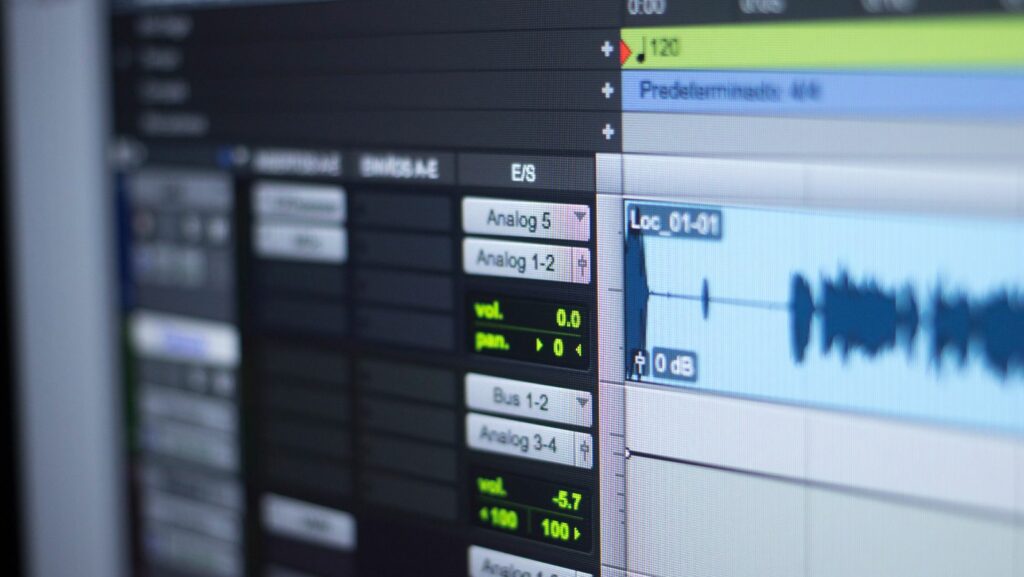Imagine walking into a store and instantly recognizing the brand just by the music playing. That’s the power of audio branding – a potent tool in a marketer’s arsenal, often overlooked yet incredibly influential. It’s more than just a catchy jingle; it’s about creating an auditory identity that resonates with your audience.
Audio Branding
Definition and Importance
 Audio branding, as the term implies, refers to the strategic use of sound that assists in the formation of an individual, identifiable brand. This technique fosters a robust emotional link with customers, bridging the gap between product and consumer. Moreover, statistics reveal numbers in favor of this trend. Eighty-five percent of advertisers affirm that this approach lends a more noticeable identity to their products, with an ensuing increase in recollection.
Audio branding, as the term implies, refers to the strategic use of sound that assists in the formation of an individual, identifiable brand. This technique fosters a robust emotional link with customers, bridging the gap between product and consumer. Moreover, statistics reveal numbers in favor of this trend. Eighty-five percent of advertisers affirm that this approach lends a more noticeable identity to their products, with an ensuing increase in recollection.
This method of marketing stretches beyond the frame of mere jingles. It encompasses brand themes, voices, sonic logos, and soundscapes, each curated to invoke a distinct set of emotions, thereby cementing auditory recall. It’s the Intel bong, it’s the Netflix ‘ta-dum’, sounds that become synonymous with a brand. In the realm of marketing, associations are everything; audio branding creates exactly that.
Key Components of Audio Branding
After understanding the significance of audio branding, highlighting some of the key components that give it an edge in marketing proves vital. Primarily, audio branding comprises Brand Voices and Background Music and Environmental Sounds, each carrying a unique impact on the overall brand image.
Brand Voices
 A brand voice, one of the central components of audio branding, imparts a brand’s personality. It is crucial for the voice to align with the brand’s overall identity and its targeted demographics. A well-thought, consistent brand voice helps in distinguishing the brand from the competition. For instance, Siri’s undoubtedly recognizable voice exemplifies Apple’s brand voice, confidently representing the brand’s attributes of innovation and user convenience.
A brand voice, one of the central components of audio branding, imparts a brand’s personality. It is crucial for the voice to align with the brand’s overall identity and its targeted demographics. A well-thought, consistent brand voice helps in distinguishing the brand from the competition. For instance, Siri’s undoubtedly recognizable voice exemplifies Apple’s brand voice, confidently representing the brand’s attributes of innovation and user convenience.
Another essential aspect of audio branding lies in background music and environmental sounds. The strategic integration of these elements elicits specific emotions from the audience, which in turn enhances their connections with the brand. For example, Starbucks leverages curated playlists and coffee shop soundscapes to create a comfortable and inviting environment, enriching customer experience and promoting brand loyalty.
Integrating these elements in the right manner makes audio branding an inevitable asset to any marketing strategy. Digitally savvy marketers realize its potential and look for new ways to incorporate sound into their brands’ identities to make them more memorable, appealing, and emotionally engaging to the target audience.
Successful Examples of Audio Branding
 Audio branding has been executed successfully by numerous companies. Propel Microsoft’s Windows ‘start-up’ sound, and McDonald’s “I’m lovin’ it” jingle, serve as paragons in the realm of audio branding. They’ve incorporated sound elements that reflect their brand’s character and evoke emotions associated with their products.
Audio branding has been executed successfully by numerous companies. Propel Microsoft’s Windows ‘start-up’ sound, and McDonald’s “I’m lovin’ it” jingle, serve as paragons in the realm of audio branding. They’ve incorporated sound elements that reflect their brand’s character and evoke emotions associated with their products.
Microsoft Windows’ starting chime, composed by Brian Eno in 1994, is a significant example of a sonic logo. The simple, six-note melody offers an illusion of technical elegance and reliability, epitomizing the brand’s identity.
Conversely, McDonald’s combines their signature tune with a punchy slogan – a nano jingle playing at the end of their commercials. It imbues a sense of relatability and fosters a connection between the brand and its customers.
Strategies for Developing Effective Audio Branding
Developing effective audio branding entails a strategic and thoughtful approach, focused not only on creating catchy tunes but resonating with audience emotions. Tailor the sound to the audience’s tastes and preferences, ensuring the sound stays authentic to the brand’s identity and ethos. Imitate successful audio branding strategies like Microsoft’s Windows startup sound and McDonald’s jingle, using memorable and distinct sound elements.
Understanding the brand’s unique attributes forms the initial step of the strategy. Extract core values, isolate mission goals, and elucidate personality traits. This foundation aids in creating a sound that signifies the brand’s essence.
Invest in research for profound insights. Analyze market trends, competitor strategies, and audience preferences. Such information guides the decision-making process, influencing the choice of sound elements, tones, and rhythms. Statistical data emphasizes the potential of a well-researched approach in enhancing product identity.

